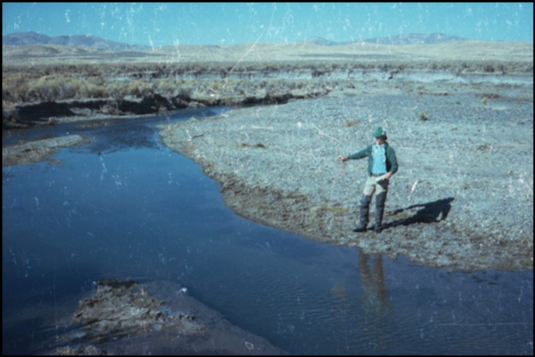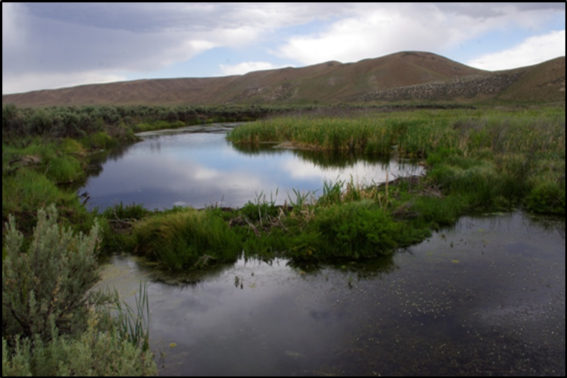Critical Management Areas
Critical management areas must be treated with special consideration because of inherent site factors, size, location, conditions, values or significant potential conflicts among uses. It may be important to designate and monitor critical areas as key areas because they have a significant resource value or concern. However, critical areas may not be extensive in area and do not reflect the management of the entire grazing unit. Critical management areas may include:
- Critical wildlife habitat,
- Areas of species of concern or special status species,
- Highly erodible areas,
- Isolated aspen patches, or
- Riparian areas.
Designated Monitoring Areas
In riparian zones, areas selected for short- and long-term monitoring may be called designated monitoring areas (DMAs) (Burton et al. 2011). In riparian areas, representative designated monitoring areas should:
- Represent management concerns within the riparian area as reflected by riparian PFC assessments, management plans, resource values and especially objectives (e.g., a functional-at-risk reach associated with spawning areas for listed fish, if spawning habitat is targeted by recovery plans).
- Have the potential to respond to the planned management. For example, a recent gully or recently incised stream is not suitable because it no longer has much opportunity for vegetation to influence channel stability and riparian functions. This will eventually return as the channel widens and develops the area needed for a new floodplain and riparian vegetation inside the gully. Functional-at-risk reaches are often a higher priority for management and monitoring than are nonfunctional or properly functioning reaches.
- Have species present that will respond to management and meet objectives.
- Represent similar reaches in use and response, if there are similar reaches in the unit. They should not be located on isolated atypical areas, such as where trails enter or cross a riparian area, water gaps or inaccessible locations surrounded by willow thickets.
- Be characterized by existing stream survey or PFC assessment locations where available (if they meet the above criteria) because of the existence of historic photos and data. Other historic photo sites may also be suitable, if they meet the criteria.
 Figure 15. Riparian areas that provide habitat for listed species,
Figure 15. Riparian areas that provide habitat for listed species,
 such as Lahontan cutthroat trout, may be considered critical areas.
such as Lahontan cutthroat trout, may be considered critical areas.
Key Species
Key species should represent objectives and be a significant component of the potential desired plant community. For example, in a riparian area, key species are normally riparian stabilizers adapted for the soil redox conditions (often sedges or bulrushes on fine soils and willows or aspen on rocky soils or steeper gradients). The species selected should:
- Be those that respond to management. Species selected remain consistent until or unless objectives change.
- Key forage species should be palatable to the grazing animals during the planned season of use and respond to grazing management. Very palatable plants that have low production potential should not be selected as key forage species. Species with low palatability or lower palatability than other abundant species should not be selected. Very palatable or very unpalatable species give a falsely high or low use reading, leading to under- or over-use of the important more or less palatable forage species.
- Key species should be perennial except on annual rangelands, and be selected after:
- Choosing the key area and evaluating the present plant community.
- Deciding the plant community or important plant(s) that will reflect the objectives.
- Giving due consideration to planned management, such as kinds and classes of grazing animals and season of use.
- Thoroughly evaluating the factors affecting grazing distribution. If only one kind of animal grazes the pastures, a single plant species generally may suffice as the key species in plant communities with low diversity.
Study Site Location Form
Download the Study Site Location Form (fillable PDF)


